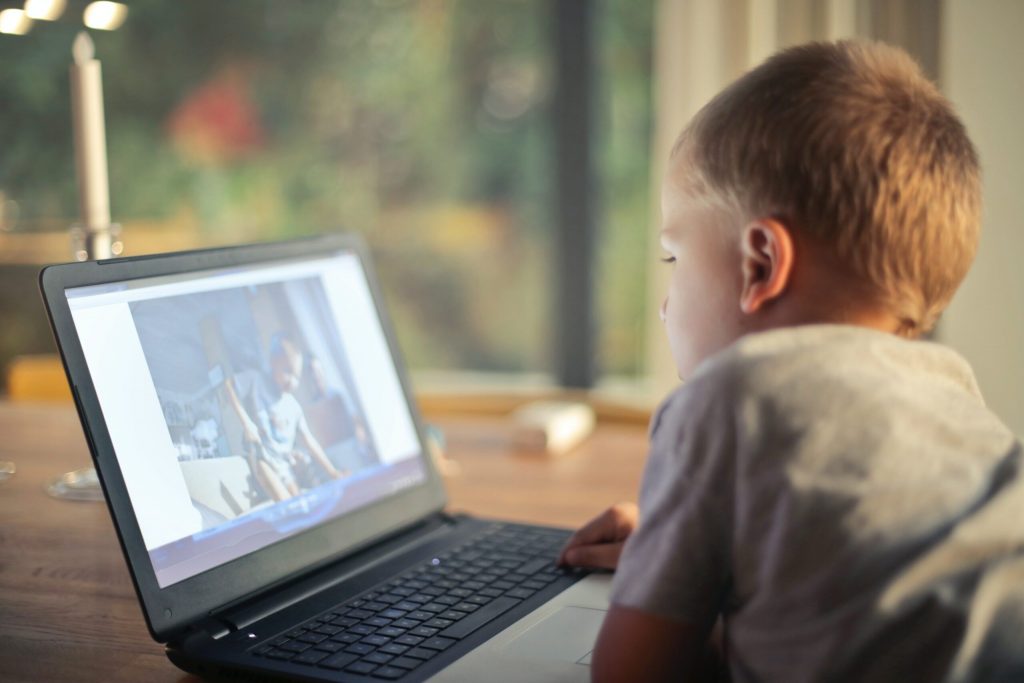Digital media will not deliver the education revolution – we do
Here in Denmark, where I have been teaching for the past 16 years or so, we have seen a remarkable entry of digital media in our classrooms. Danish classrooms may well be among the most digitized in the world. This was not just a result of the pandemic, however. It is a process that has been going on for many years prior already.
As a teacher, I too had been convinced of the revolutionary potential of using digital media in my lessons. However, the lockdowns during the pandemic, as well as observations from my classes have blurred the picture.

The advantages of digital media are obvious
It does not take much to see the advantages of digital technologies in our education systems. The possibility of remote learning, strengthened interactivity, instant feedback and gamification make digital technologies important tools in the teacher’s bag.
And of course, there is the advantage of building collaborative processes like with Google Docs, as well as the ability to efficiently organize and deliver content to learners through platforms like Google Classroom. Possibilities, that we only dreamed of, when I was still studying to become a teacher.
Use of digital media gives us some unique challenges
There is no doubt, that digital technology is here to stay. Also in our education systems. But the digital tools we give to our children (and ourselves) also bring some unique challenges. When news and information can spread faster than ever, so does misinformation. That requires an increased focus on learning how to critically consume information. That is one of the backgrounds for developing my critical media consumption course.
Another issue is, that our smartphones, tablets, social media, etc. are designed to manipulate our dopamine systems, which especially for children can have serious consequences. Especially children with neurodiversity are more prone to addiction. That is also what I experienced in my classroom. What I frequently see is students (and adults), who are unable to let go of their tablets and smartphones in social situations. Who use every ounce of unscheduled time to surf the web or play games. And who do so, whenever I am turning my back to the students for even a split second. And interviews with my colleagues tell me that I am not alone. Evidence shows, there is a clear link between overusing digital media and decreasing attention spans.
A final challenge is the fact instant accessibility, perceived anonymity, and ease of use of digital technologies have given rise to new forms of bullying.
Bullying is not unique to the digital age.
The main reasons for bullying can be found in the environment that we foster in our schools, homes, and workplaces. But digital media have meant that bullying activity has moved outside the immediate sphere of influence for adults to intervene.
That fosters a need for rethinking how we educate our children about the use of digital media, setting boundaries, and fostering healthy relationships.
Online learning lessons from the pandemic
When the school, where I work, closed down for a few weeks during the spring of 2020, we scrambled to readjust to full-time online lessons.
We had already used digital tools in our lessons before the pandemic hit. We had an abundance of digital tools and learning platforms to choose from. Accessibility to the internet or computers was not an unsolvable issue for our students. We delivered computers to those homes, that did not have computers and we organized in teams to push new content to the students.
One thing, I noticed very quickly, though was that productivity among my students varied wildly, even more than in the classrooms.
Some students were living in care homes and foster families, that had highly trained adults around them and could support them very well at home.
Others were coming from homes, where both parents were working front-line jobs and left to their own devices.
And those students, that already struggled with keeping focus and attention were quickly left behind.
The learning platforms provided good feedback on the results.
But they did not provide me a way to follow the small steps in the work process. Like the students starting to look around the room for distractions when they lose focus. Or the sighs, that indicate that the student needs help but is too afraid to ask for it.’
From this experience, I concluded that online learning tools are catering best to the students with the best resources and capacities.
But not all students fit this group. After a while, we decided to do what was necessary and open our school again. I am grateful, that in Denmark, the government did recognize this issue and allowed schools to open for the most vulnerable groups of children.
The digial revolution does not happen on its own
The above paragraphs fleshed out some of the unique challenges, that our classrooms face in a digital age.
If we want the revolution we envisioned, we need to address these challenges. We need to train our educators in using digital media and doing so critically. And we need to do the same with our students. We need curriculums that address these. And we need to take some serious discussions about where the boundaries of digital devices should be.
Just bringing digital media into the classrooms does not automatically equal higher learning.
The media giants are busy feeding us with false promises in the name of profit. And as Frances Haugen showed us, they are fully aware of the consequences.
There may be a good reason, why many private schools disallow students to bring their own mobile devices.
In Denmark, we have been a front-runner in the digitalization of our classrooms, but I feel that the critical debate is completely absent.
That needs to change. Especially since the technology is here to stay.